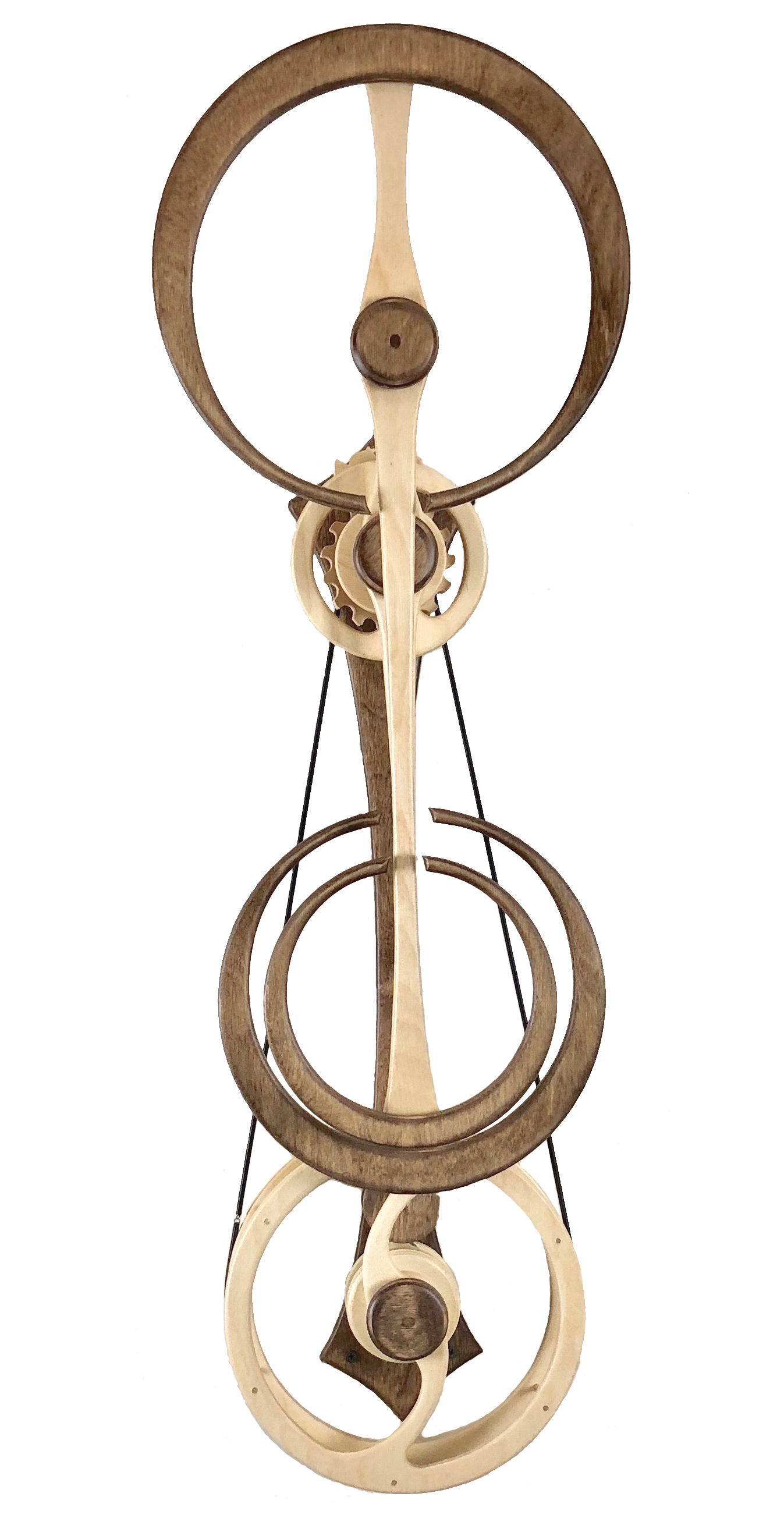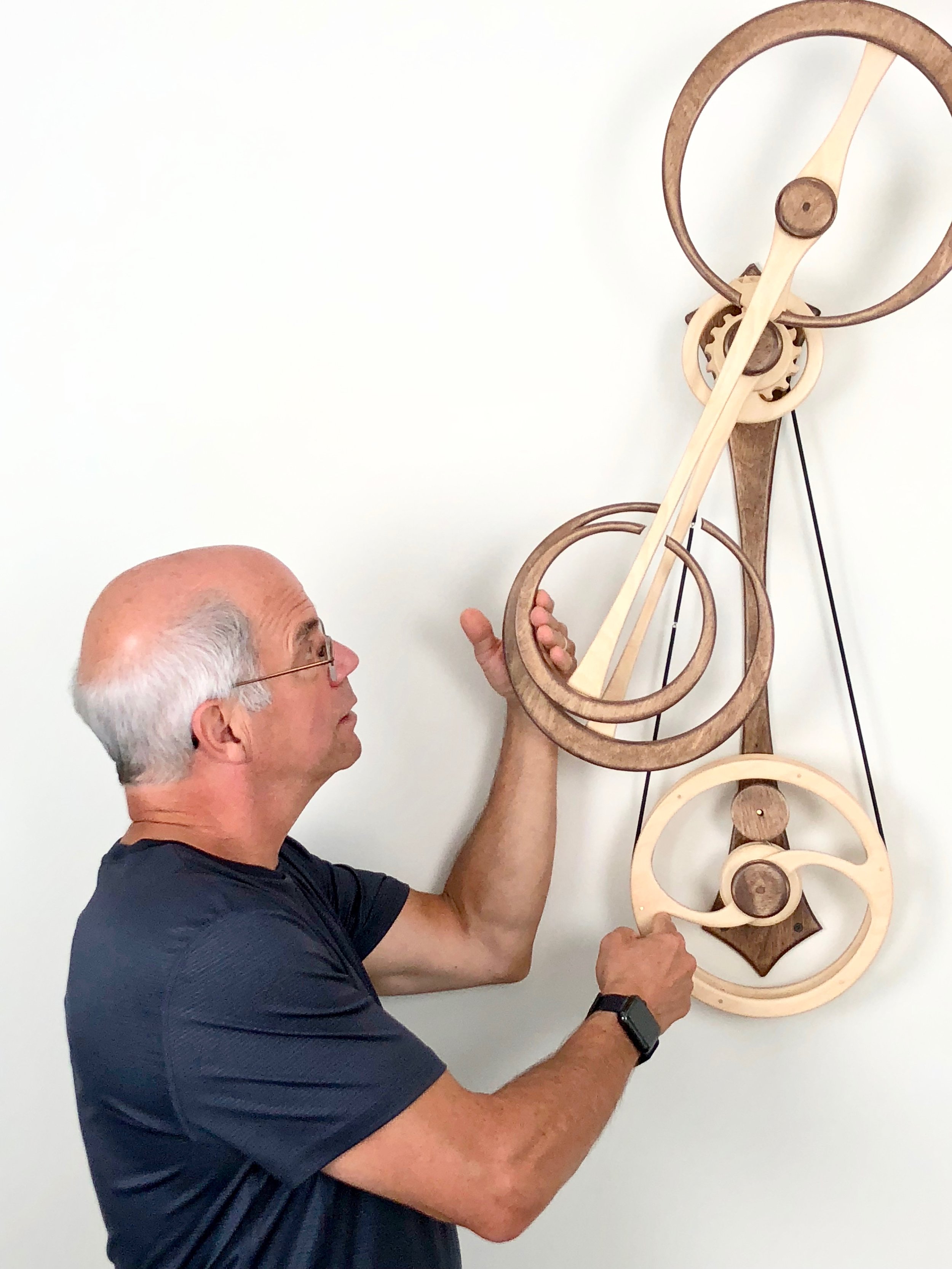Limited Edition of 95 • Size: 46" w x 40" h x 7" d • Approximate Run Time: 10 Hours
Price: $4000.00 - - opening bid - USA only
About Chaos
The history of Chaos spans decades. In 1979, I was playing with different shapes and balances looking for interesting patterns. A certain combination, when hand powered, created some fascinating motion. The back wheel would rotate around and the balancing front wheel would just hang there. Then, for seemingly no reason the front wheel would start swinging erratically changing the motion of the back wheel. This was my first experience with unpredictable or random behavior. I didn’t know what was going on but I liked it. I added a drive mechanism and a sculpture named Serpentine was born.
Several decades and many sculptures later a fascination with the graphic properties of fractals led me to a book entitled Chaos by James Gleick. In a section on simple systems like pendulums and double pendulums I found this paragraph:
“Unpredictability was only the attention-grabber. Those studying chaotic dynamics discovered that the disorderly behavior of simple systems acted as a creative process. It generated complexity: richly organized patterns, sometimes stable and sometimes unstable, sometimes finite and sometimes infinite, but always with the fascination of living things.”
I was reminded of Serpentine and its changing patterns. Serpentine was a type of double pendulum. I wanted to explore this more. I had new tools, materials and nearly 40 years of experience and this time I wanted to understand the motion and, if not control it, at least influence it.
I’ve spent much of this past year playing with and studying double pendulum motion. I tried several different forms before settling on 2 stylized pendulums combined into a double pendulum. Other forms could work but I settled on the simplest shape so the motion would be the focus. The big breakthrough came when I created a mechanism that would push the pendulums only when they needed it otherwise allowing free swinging motion. As I refined the mechanism I found ways to fine tune it. For the last few months I’ve had many examples of Chaos performing in my studio. I tried many adjustments to see how each would influence the motion. Eventually I created a spreadsheet so I could track each change in an organized fashion. I’m finally ready to release Chaos into the wild. I hope you enjoy it as much as I do!
Winding Chaos:
Here is a video of David demonstrating how to wind Chaos.
About Sound:
Chaos has a wonderful wooden clicking sound. It is not silent but creates a melodic background accompaniment. I have video taped Chaos in action without the added musical background so you can hear as well as see the sculpture.




